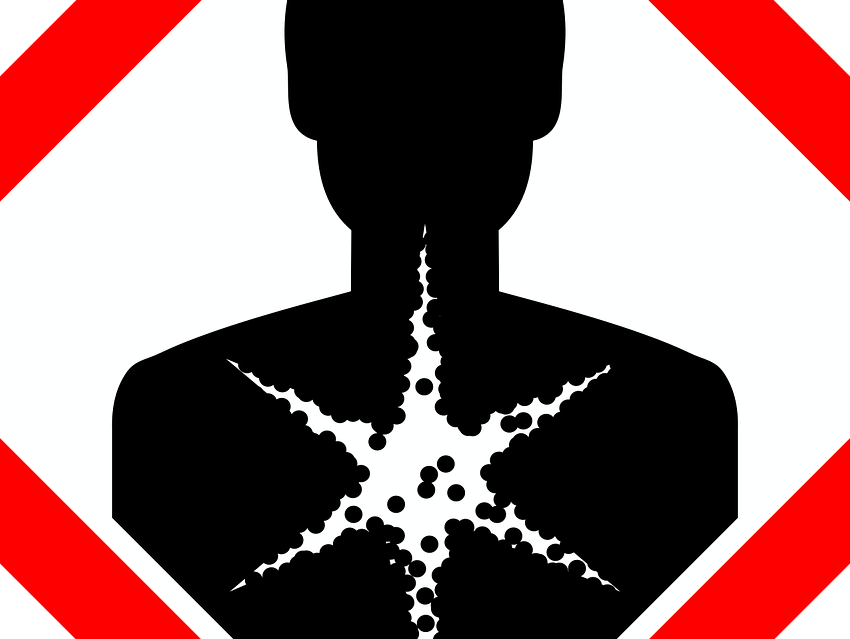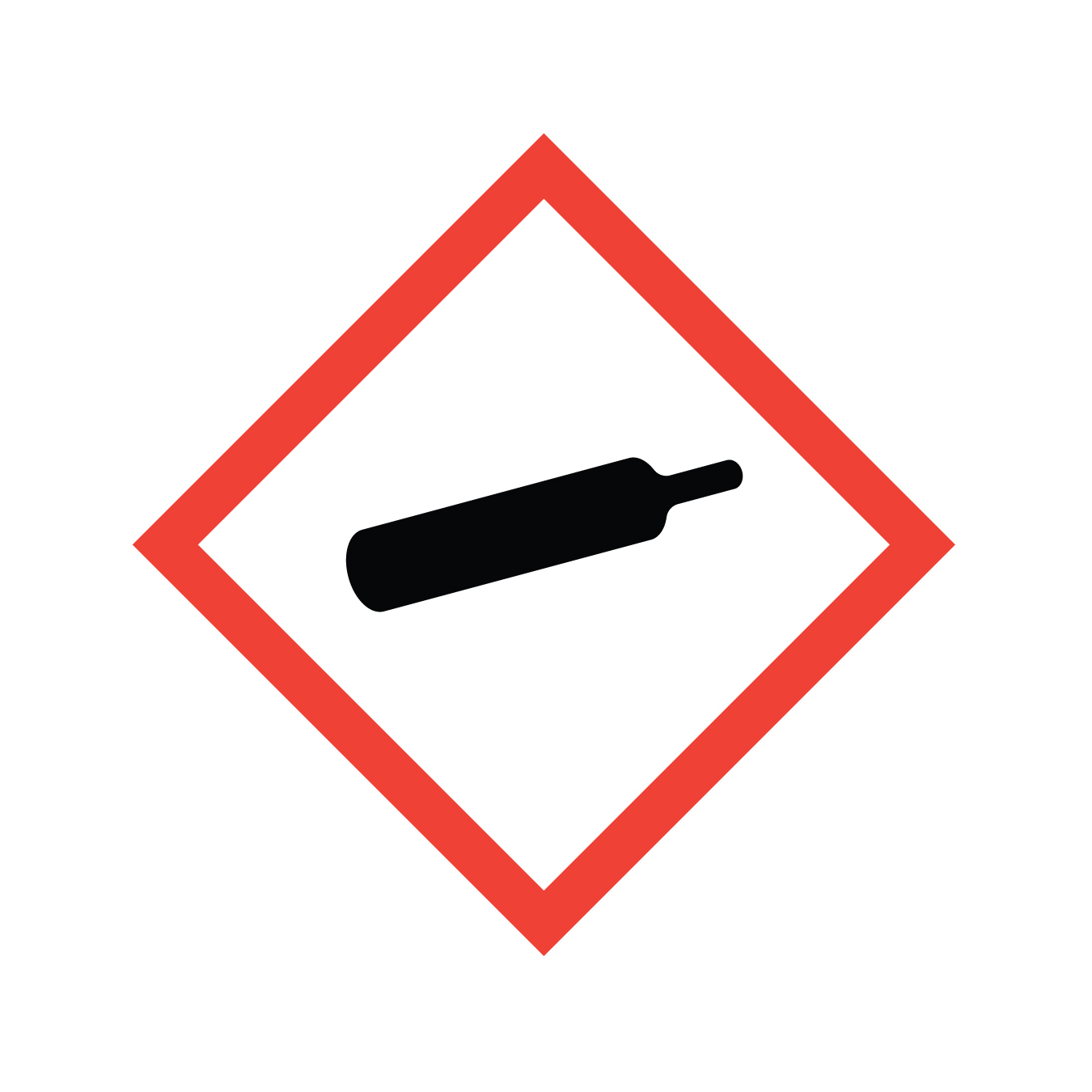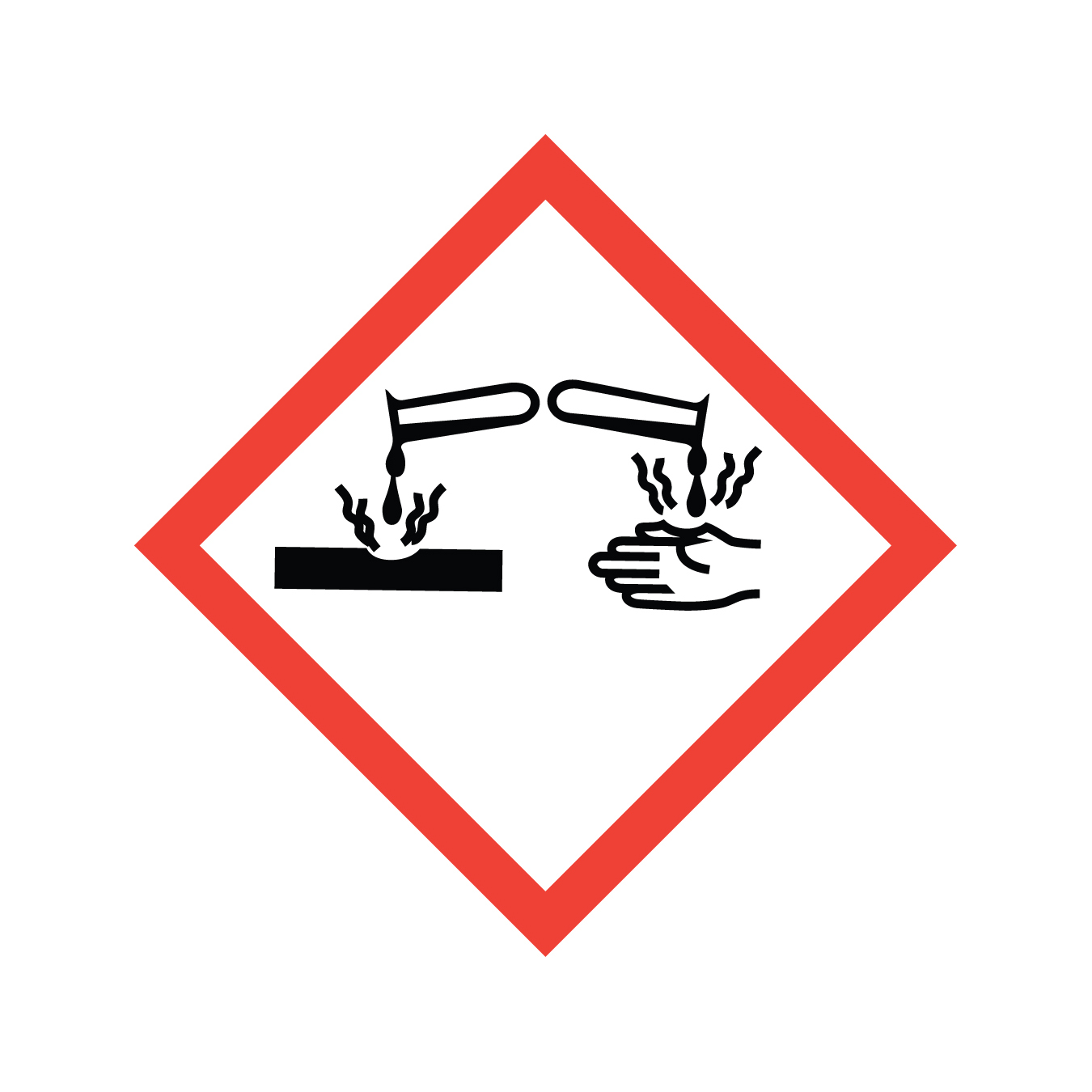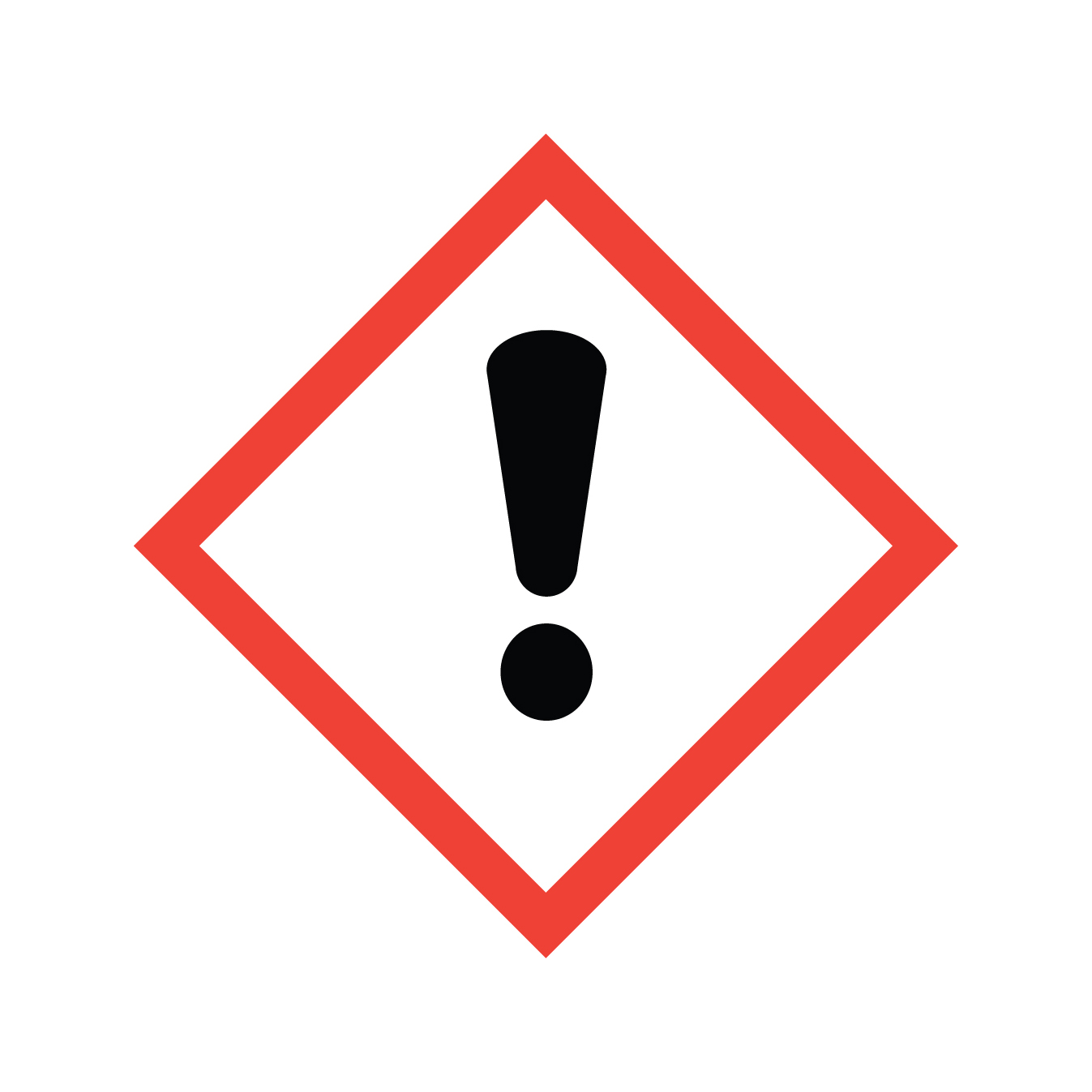Test your knowledge about the hazard symbols and pictograms. A hazard pictogram provides information about the damage a particular substance or mixture can cause to human health or the environment. One or more pictograms might appear on the labeling of a single chemical.
What Do the Symbols Stand For?
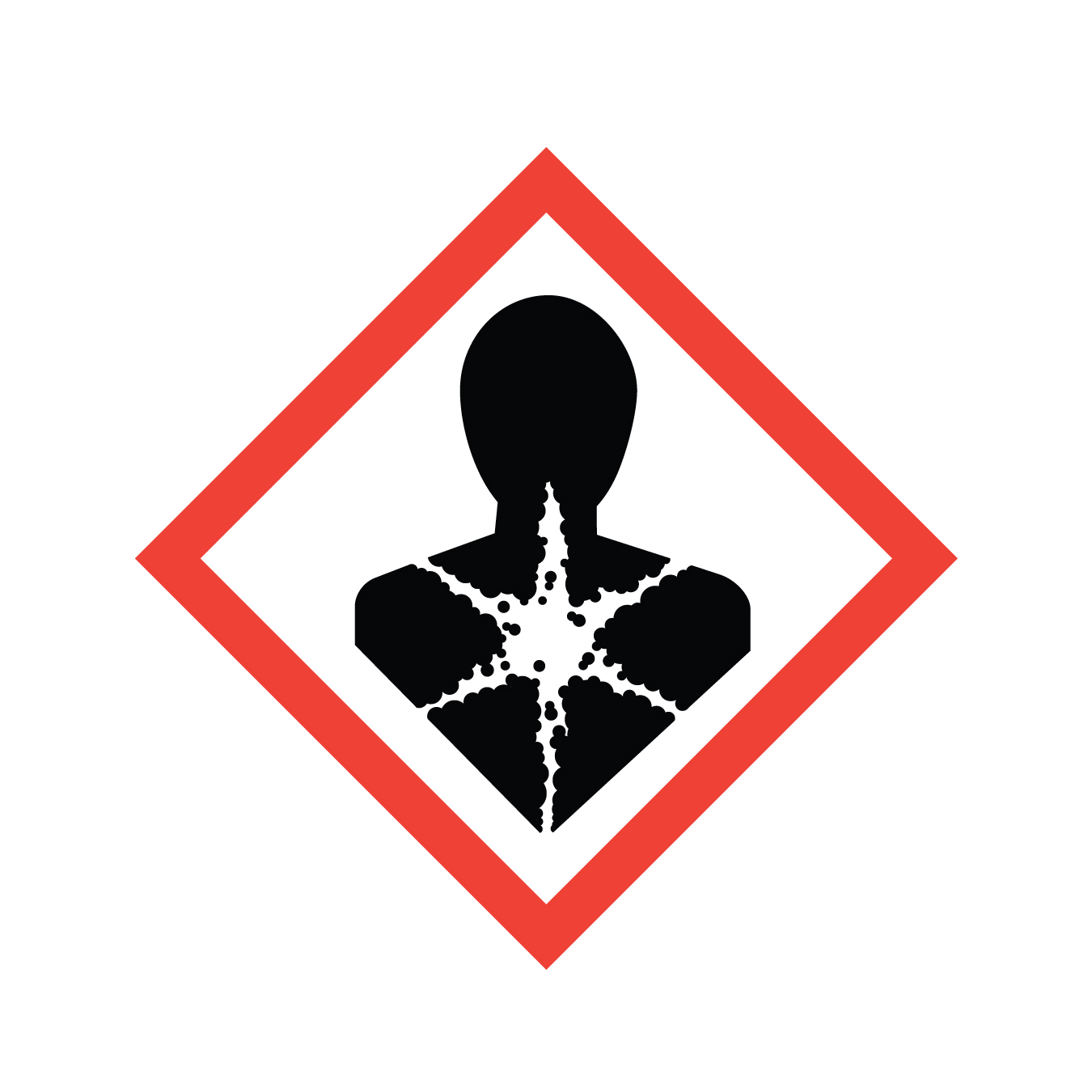
Health Hazard: A cancer-causing agent (carcinogen) or substance with respiratory, reproductive, or organ toxicity that causes damage over time (a chronic, or long-term, health hazard).
Examples for substances with the above-described properties are chloroform (trichloromethane = carcinogenic), benzene (carcinogenic) and 1,2-dimethoxyethane = ethyleneglycol dimethyl ether (toxic to reproduction).

Flame: Flammable materials or substances liable to self ignite when exposed to water or air (pyrophoric), or which emit flammable gas.
Examples for substances with the above-described properties are diethyl ether (liquid), hydrogen or propane (gases), acetone, and sodium metal.
Gas Cylinder: Gases stored under pressure, such as ammonia or liquid nitrogen.
Examples include pressurized gases, liquefied gases, refrigerated liquefied gases, and dissolved gases.
Environmental Hazard: Chemicals toxic to aquatic wildlife (non-mandatory).
Examples for compounds with the above-described properties are tributyl tin chloride, tetrachloromethane, and petroleum hydrocarbons like pentane and petroleum benzine.
Skull and Crossbones: Substances, such as poisons and highly concentrated acids, which have an immediate and severe toxic effect (acute toxicity).
Examples for toxic substances include hydrogen cyanide, dinitrobenzene isomers, and the naturally occurring nicotine from tobacco.
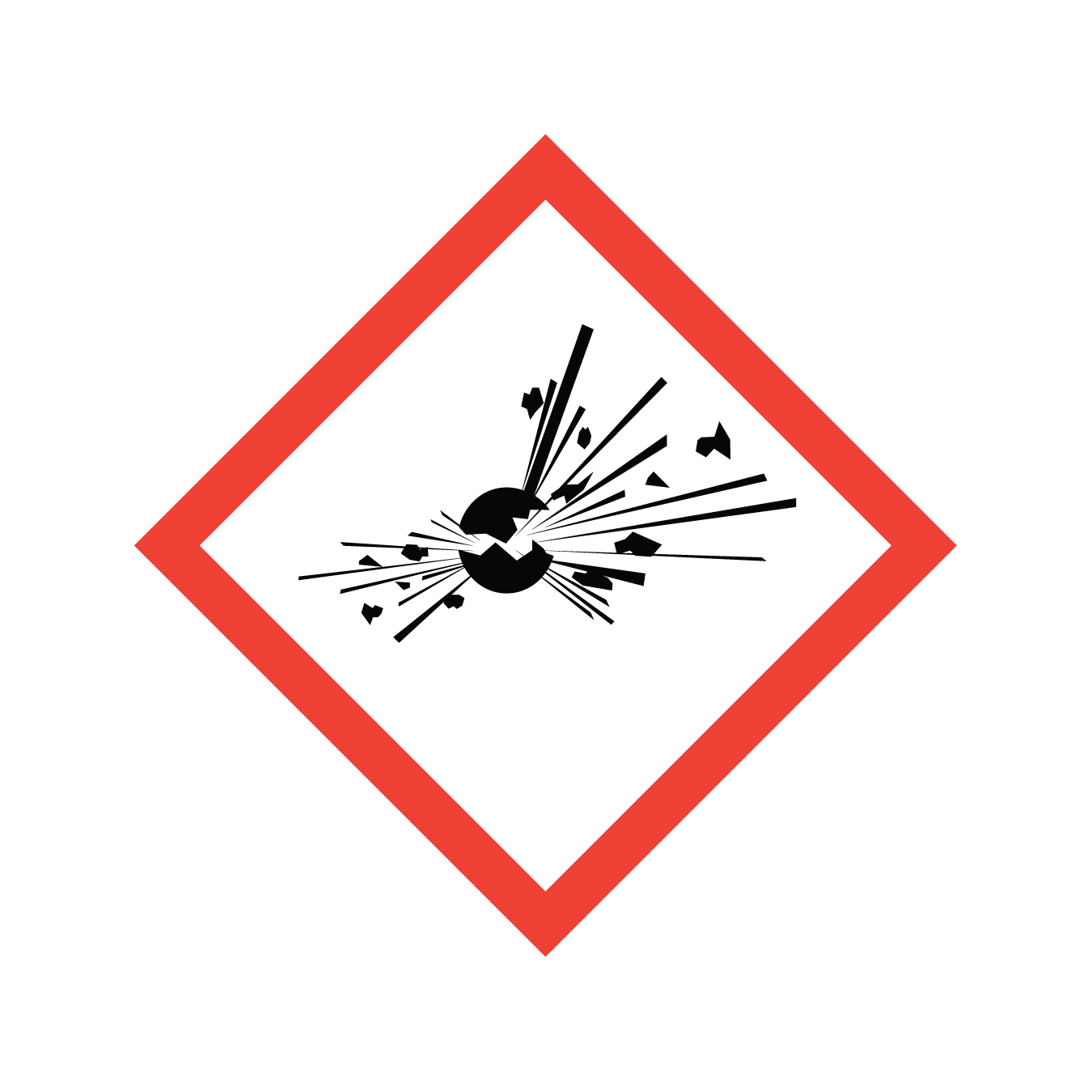
Exploding Bomb: Explosives, including organic peroxides and highly unstable material at risk of exploding even without exposure to air (self-reactives).
An example of a compound with the above-described properties is 2,4,6-trinitrotoluene (TNT).
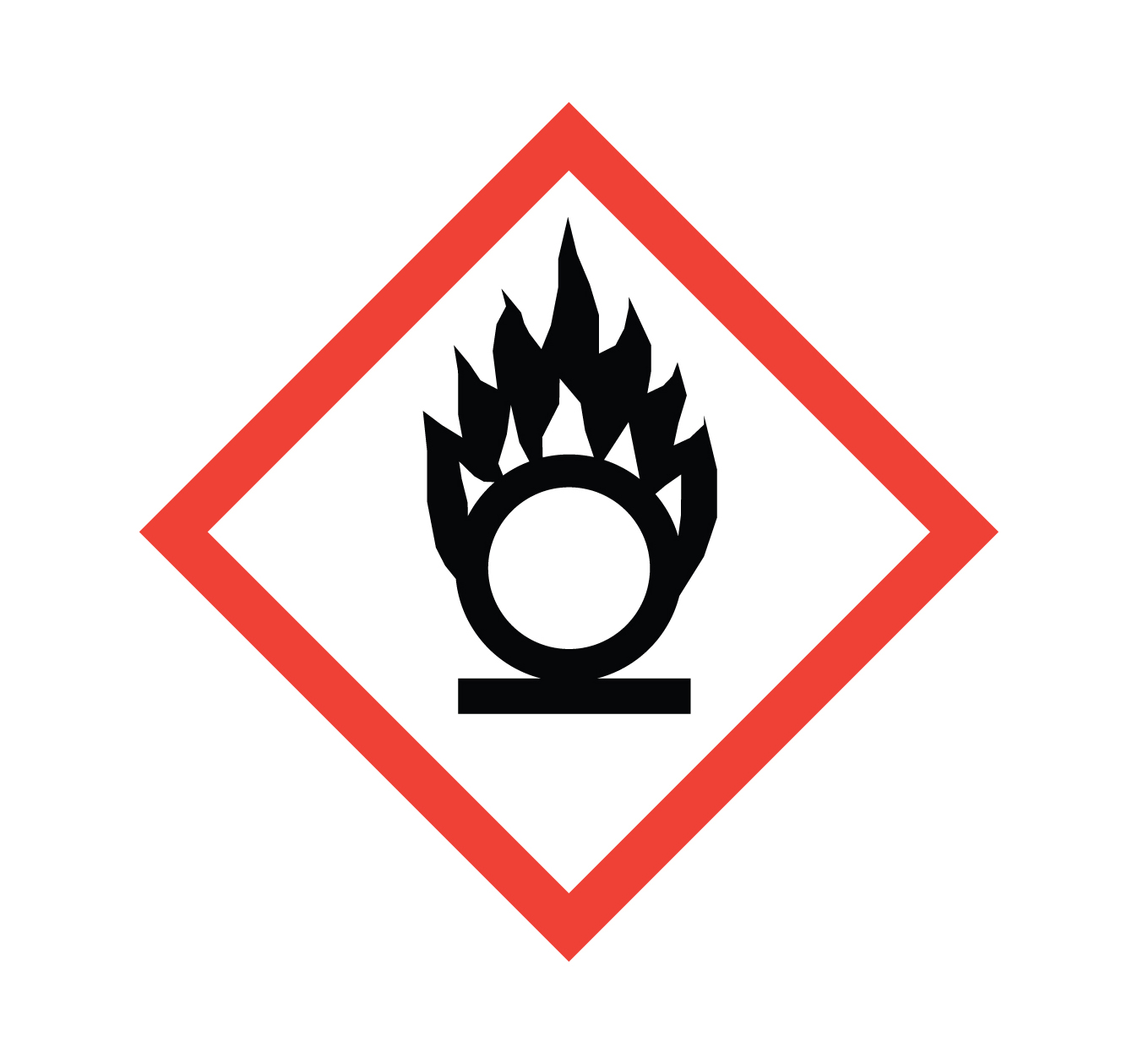
Oxidizer/Flame Over Circle: Identifies oxidizers. Oxidizers are chemicals that facilitate burning or make fires burn hotter and longer.
Examples for substances with the above-described properties are potassium chlorate, potassium permanganate, and concentrated nitric acid.
Corrosive: Materials causing skin corrosion/burns or eye damage on contact, or that are corrosive to metals.
Examples for substances of this group are mineral acids like hydrochloric acid and sulfuric acid and bases like sodium hydroxide solutions (caustic-soda solutions).
Exclamation Mark: An immediate skin, eye or respiratory tract irritant, or narcotic.
Examples for substances with the above-described properties are the laboratory solvents 1,2-ethanediol = 1,2-ethylene glycol = glycol and cyclohexanol, compounds such as isopropylamine and calcium chloride, as well as also more diluted acids and diluted bases.
- Hazard Symbols in Nachhaltigkeit im organisch-chemischen Praktikum, www.oc-praktikum.de
Sustainability in the Organic Chemistry Lab Course, www.oc-praktikum.de/nop/en-entry
